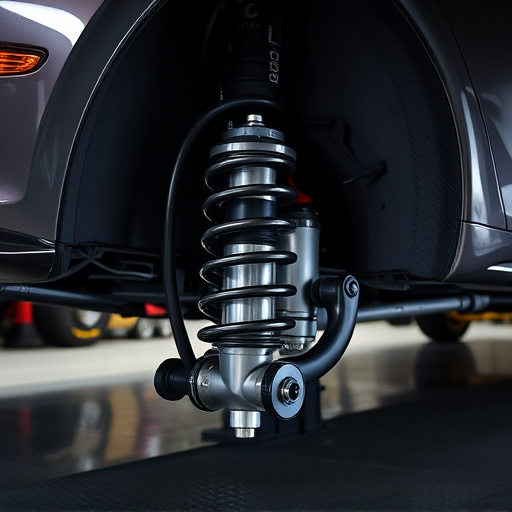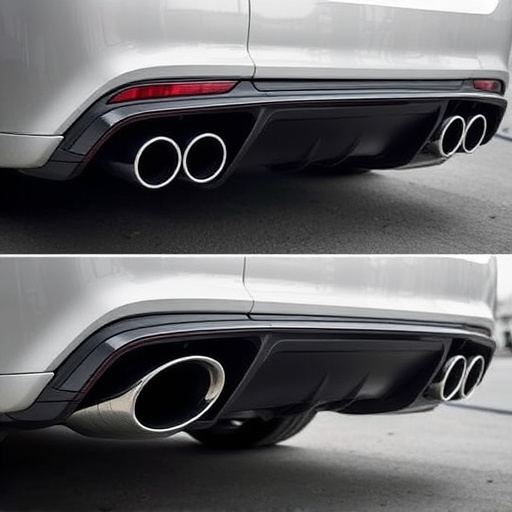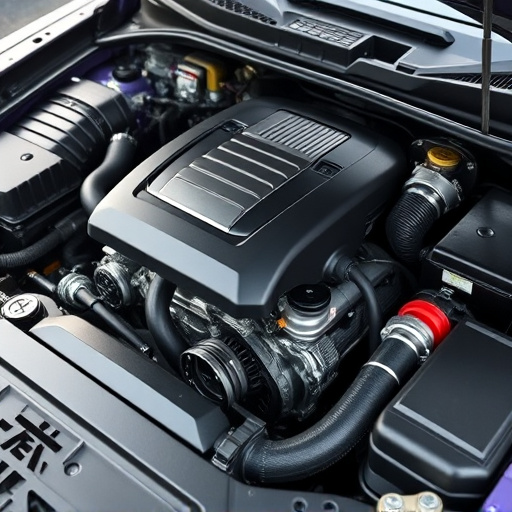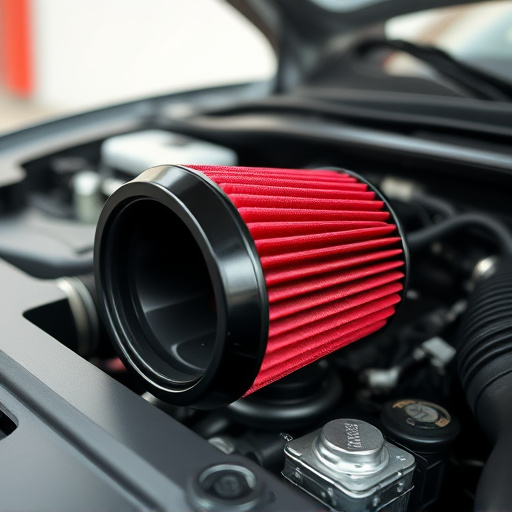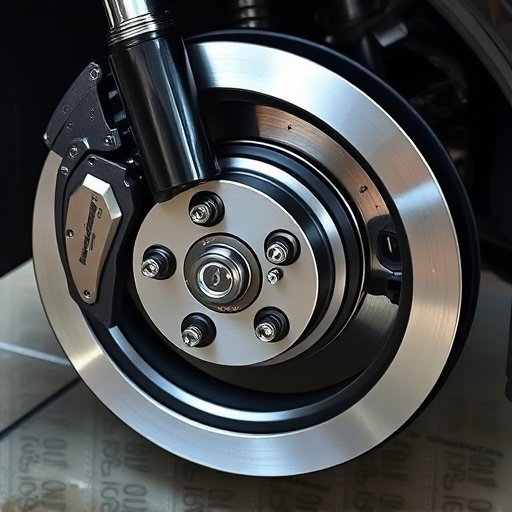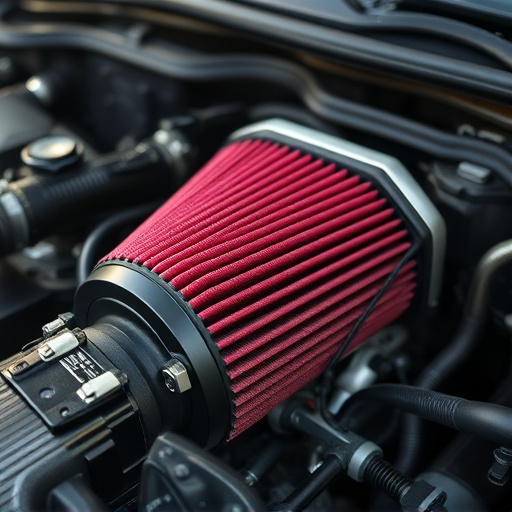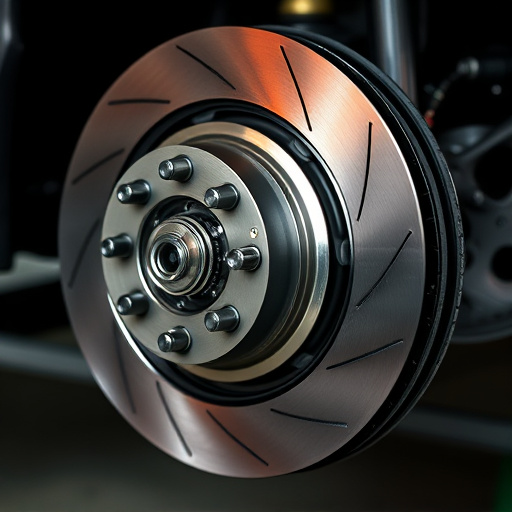Drop-in air filters (DIAFs) are easy-to-install alternatives to stock filters, improving airflow and engine performance. They trap contaminants but don't require modifications. Cold Air Intake (CAI) systems, in contrast, draw cold, dense outside air through specialized components for significant power boosts, better throttle control, and improved driving dynamics, though they're more complex to install. CAIs offer advanced benefits over DIAFs, catering to drivers seeking substantial performance enhancements.
“Unleash your vehicle’s full potential with an enhanced breathing system: drop-in air filters and cold air intakes. This comprehensive guide delves into these powerful modifications, offering a clear understanding of their unique functionalities. From improving engine performance to enhancing fuel efficiency, both options provide significant benefits. We’ll explore why drop-in air filters are popular for their convenience, while cold air intakes offer more advanced cooling capabilities. Get ready to breathe new life into your ride.”
- Understanding Drop-In Air Filters and Their Functionality
- The Benefits of a Cold Air Intake System
- Comparing Performance: Drop-In vs. Cold Air Intake Efficiency
Understanding Drop-In Air Filters and Their Functionality

Drop-in air filters are a popular choice for those looking to enhance their vehicle’s performance. As the name suggests, these filters are designed to be a direct drop-in replacement for the stock air filter housing, making installation a simple and straightforward process. They are known for their efficiency in filtering out dust, dirt, and other contaminants from the incoming air, ensuring a cleaner and more robust airflow to the engine. This simplicity and ease of installation make them an attractive option for many car enthusiasts seeking an affordable way to boost vehicle performance.
These filters typically consist of a pleated media made from high-quality materials, allowing for maximum air flow while capturing even the smallest particles. The efficient design not only improves engine breathing but also reduces backpressure in the intake system, which can result in enhanced fuel efficiency and more powerful performances. When compared to traditional performance air filters, drop-in air filters offer a straightforward solution without the need for complex modifications or additional intake components.
The Benefits of a Cold Air Intake System

Cold Air Intake (CAI) systems offer several advantages over traditional drop-in air filters, primarily by enhancing engine performance and fuel efficiency. Unlike a simple drop-in filter that solely cleans the air entering the engine, CAI systems take it a step further by drawing in cold, dense air from outside the vehicle, often through an opening in the fender well or under the hood. This colder, denser air contains more oxygen molecules per volume, which is crucial for optimal combustion. By providing your engine with a consistent supply of rich oxygenated air, a CAI system can improve torque and horsepower, resulting in smoother acceleration and overall improved driving dynamics.
Additionally, these systems often incorporate specialized filters designed to minimize restrictions in the intake airflow, ensuring that your engine receives clean, unrestricted air. This is particularly beneficial when combined with suspension kits or suspension components that enhance cornering capabilities and vehicle stability. As a result, drivers may notice improved response times, better throttle control, and even reduced noise levels compared to standard drop-in filters, all while potentially reducing exhaust systems back pressure.
Comparing Performance: Drop-In vs. Cold Air Intake Efficiency
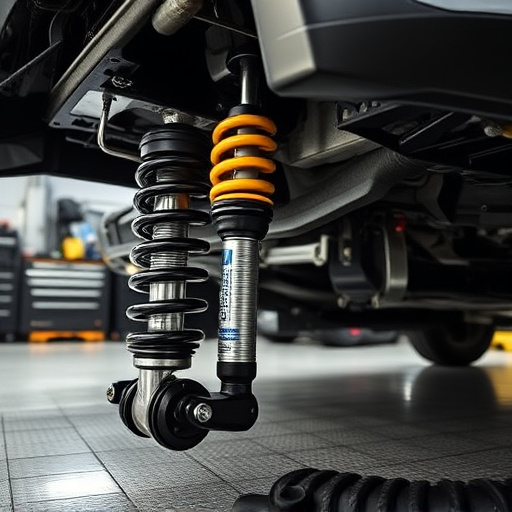
When comparing drop-in air filters and cold air intakes (CAIs) for performance, it’s essential to understand their distinct approaches to enhancing engine intake. Drop-in air filters are straightforward solutions that replace the stock filter with a high-flow design, allowing more air to enter the engine compartment. This simple modification can result in a slight power increase, particularly in vehicles with restrictive factory air filters. The efficiency of drop-in air filters lies in their ease of installation and immediate impact on airflow.
In contrast, cold air intakes are more intricate systems designed to draw cold air from outside the vehicle, often through a long tube and filter. This process cools the intake air, which can result in a denser mixture entering the engine, leading to improved combustion and power gains. CAIs offer a more substantial performance boost than drop-in filters but require more time and effort for installation due to their complex design involving components like ducting, heat shields, and external or internal air boxes. While they might not be as quick to install, cold air intakes can provide significant improvements in engine response, throttle sensitivity, and overall vehicle performance, often accompanied by a distinctive sound from the added exhaust tips and mufflers.
When it comes to enhancing engine performance, both drop-in air filters and cold air intake systems offer distinct advantages. While drop-in air filters provide an easy, cost-effective upgrade with minimal installation, cold air intake systems deliver superior cooling and airflow, often resulting in increased horsepower and torque. The choice between the two ultimately depends on your specific needs and budget. For a quick and efficient performance boost, drop-in air filters are a reliable option, whereas cold air intake systems offer more significant gains but require more intricate installation.

